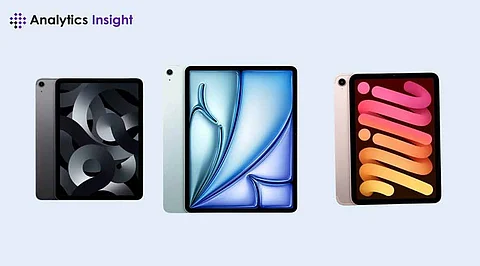

The US$599 iPad outperforms models costing twice as much for everyday tasks. Here's what Apple doesn't advertise.
The iPad selection process is a genuine challenge even for tech-savvy shoppers . Specs look similar across models yet prices vary widely. Getting this decision wrong means spending hundreds extra for unused power or struggling with limitations that a slightly pricier model would solve.
Apple now sells three distinct iPad versions with overlapping capabilities. Certain features matter tremendously for specific uses, while others waste money. The differences between models become clearer when examining what each tablet handles best day-to-day.
The iPad Air sells for US$599. This price provides the best value in the lineup. The M3 chip handles everything from editing 42MP RAW photos to running Procreate with 14 layers without the dreaded lag that plagued previous generations.
Apple offers two screen options: 11-inch or 13-inch. The smaller fits most bags easily. The larger one gives extra space for serious work. Both screens handle reading text and running apps side by side well.
Colors look accurate enough for casual photo work. Maximum brightness reaches adequate levels even outdoors. The Air uses LCD technology instead of OLED. This means blacks appear dark gray rather than truly black. Most users never notice this limitation in daily use.
The Air works with the Pencil Pro stylus, which costs US$129 extra. This enables natural drawing and writing. Rotating the Pencil changes brush strokes accordingly. Artists find this feature helpful.
College students and casual creators love this model. It works well for professionals who need a good tablet without paying top price. The Air makes sense when upgrading from an older iPad. It will stay useful for years to come.
The iPad Mini sells for US$499 and includes the A17 Pro chip. This processor supports Apple Intelligence for better writing and photo tools. The 8.3-inch screen fits in small bags or large pockets. Text looks sharp and colors appear bright. Reading books feels natural at this size.
The latest Mini now works with the Pencil Pro. This gives it the same drawing abilities as pricier iPads. Students who take notes by hand appreciate this feature. So do professionals who sketch ideas during meetings.
Frequent travelers choose the Mini most often. Medical staff and field workers also prefer it. The Mini offers nearly all the features of bigger iPads in a more portable size. No special bag needed.
The iPad Pro starts at US$999. It runs on the speedy M4 chip, which is faster than most laptops.
Its Tandem OLED display produces deeper blacks and refreshes twice as fast (120Hz vs 60Hz) as other iPads, making scrolling smoother.
The Pro works with better accessories too. The Pencil Pro adds tiny vibrations when drawing. The Magic Keyboard now has more keys and a bigger trackpad.
Artists pick this model most often. So do designers and video editors. The high price makes sense for people who make money using their iPad daily.
Each iPad serves different needs. The Mini wins for portability. The Air offers the best value. The Pro delivers top performance. Apple keeps some technologies exclusive to expensive models. They install OLED screens only in Pro tablets because the components cost them more. This creates clear differences between price tiers. The new Apple Intelligence features draw a line between current and previous generations.
For the majority of consumers, the iPad Air represents the most rational selection at present. The device offers sufficient computational capacity to accommodate software updates for multiple annual cycles.
The competitive pricing structure prevents post-purchase financial regret. Compatible peripheral devices significantly enhance functionality. When evaluating the typical lifecycle of iPad devices prior to replacement necessity, the Air model achieves an optimal balance between computational performance and financial investment.
